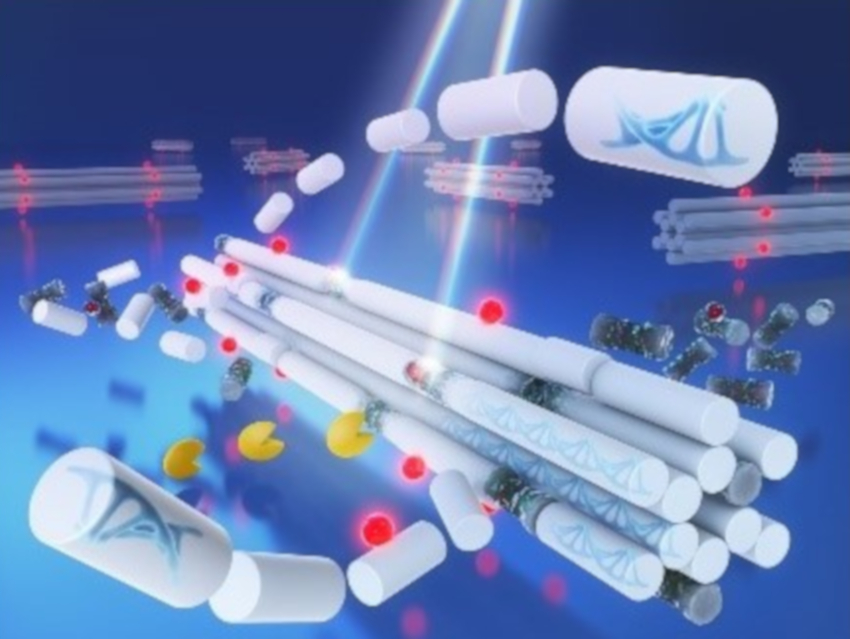Nanorulers are DNA origami nanostructures that can be used as brightness standards and distance rulers in optical microscopy. However, they are vulnerable to light and enzymatic damage. Self‐repair of such artificial self-assembled molecular machines, like similar structures in nature, could be a useful approach to solve these problems.
Viktorija Glembockyte, Philip Tinnefeld, Ludwig Maximilian University of Munich, Germany, and colleagues have shown that defective DNA origami structures can repair themselves with the help of their self-assembling properties. By weakening key interactions between different strands in the DNA nanostructure, they can undergo a constant exchange with a pool of intact building blocks. This self‐regeneration can be driven by thermal energy or by the occurrence of damage. Using this approach, the overall lifetime of the devices can be drastically increased.
This dynamic self-repair could have advantages over existing static approaches to stabilize DNA nanostructures, such as encapsulation. This work represents a step towards the complex repair mechanisms of living organisms, where continuous regeneration is standard.
- Self-Regeneration and Self-Healing in DNA Origami Nanostructures,
Jürgen Michael Scheckenbach, Philip Tinnefeld, Viktorija Glembockyte, Tom Schubert, Carsten Forthmann,
Angew. Chem. Int. Ed. 2020.
https://doi.org/10.1002/anie.202012986




